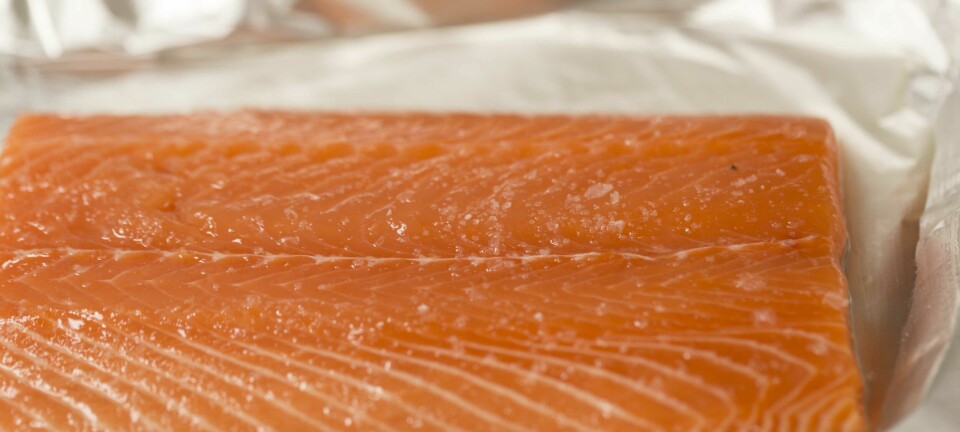
Looking back, thinking ahead:
Nathan Pyne-Carter
Fish Farming Expert has asked individuals connected to the salmon farming industry about their year, and what they hope for in 2025. Today we feature Nathan Pyne-Carter, chief executive of Dundee-headquartered Ace Aquatec.
What have been the highlights for Ace Aquatec in 2024?
Demand for easy access to humanely harvested fish has increased throughout the last year, as has awareness around improving welfare standards. A recent survey among European and Canadian consumers stated that they were prepared to pay 14% more for fish from farms where high welfare standards were guaranteed. This is great news from a fish welfare perspective and has opened a lot of new doors for our systems to be deployed in different territories such as in Japan, Thailand, and further afield.
Although Asia was a key territory for us to break into this year, we also continued to focus our efforts in South America, more specifically Chile. Constanza Fontaine joined us as the sales and service manager for the region earlier this year to develop and expand Ace Aquatec’s presence in Chile where welfare standards are rapidly evolving, corresponding to an increased demand for ethical stunning technology amongst producers, regulators, and supermarkets.
Fish welfare is one of our key pillars and remains a fundamental aspect of the R&D we carry out. This year we partnered with Shrimp Welfare Project to accelerate the adoption of humane stunning for shrimp, one of the world’s most widely produced aquatic species for human consumption. As a result, we launched a new portable in-water stunning system which is self-contained and transportable. A shrimp farm based in Thailand was the first to benefit from the partnership and further systems will continue to be funded by SWP next year.
Awards
We also won the Aquaculture UK award for Innovation for our A-BIOMASS and the Collaboration award for our work with Tiny Fish who help freshwater salmon hatcheries in Scotland meet zero-waste targets. The industry’s response to our A-BIOMASS roll out has been strong with positive results being recorded throughout the year.
After unveiling our A-BIOMASS camera on the European stage, we were especially pleased to launch it to the Japanese market at this year’s Japan International Seafood and Technology Expo in Tokyo. This was a joint sponsorship project funded by the Department of Environment, Food & Rural Affairs (Defra), the Department for Business & Trade (DBT), Seafish and Seafood Scotland.
What will be the most significant challenges and opportunities for your company in the coming year?
Accelerating the adoption of sustainable practices is always going to be a challenge and opportunity for us. Although we’re seeing more and more supermarkets demand higher welfare standards, there are a number of countries that aren’t quite there yet.
Through new partnerships, including our collaborations with Tiny Fish and the Shrimp Welfare Project, we’re able to look at scaling both our operations and digital offerings to provide welfare-first solutions to the rest of the world.
With the introduction of our A-FISH IQ portal, and thousands of readings presented daily by our A-BIOMASS camera, we’re providing farmers with earlier detections of health and environmental issues that may otherwise have taken longer to come to the surface (e.g.: wounds and appetite).
It’s important that farmers continually evaluate these in order to put into practice remedial actions that not only protect and grow healthy fish, but minimise any environmental damage.
What do you see as the most significant challenges for the salmonid farming industry in Scotland and globally in 2025?
The global aquaculture market has grown dramatically in recent decades and is projected to grow even further over the course of the next five years. With this growth comes specific challenges around lice solutions, as rising sea temperatures bring increased threat of sea lice for fish populations. Feed waste management and sustainable practices such as humane slaughter and reducing the reliance on wild-caught fish in fish meal also present challenges as the global demand for high welfare seafood continues to rise.
To sustainably grow fish production and meet the demands of the supply chain, we need to be able to access accurate and timely data for decision making around feed management, disease prevention, harvest volumes and mortality rates. AI-powered aquaculture can make a huge difference to how we care for our fish, especially at remote sites and in waters with reduced visibility.
Timely insights allow for early intervention. With enough data, AI can forecast disease outbreaks well in advance by analysing environmental conditions, fish health indicators, and regional trends, ultimately reducing mortality risks.
Feed waste
Feed waste carries a huge cost for farmers, as well as contributing to soil pollution. Our AI-powered A-BIOMASS can help ensure that fish are only fed when they are hungry through swim speed detection algorithms, and this ensures minimal wastage. By measuring fish in-water, without human intervention, our camera captures fish weights and dimensions in real-time, allowing farmers to determine when to grade fish, when to bring in health treatments, and when fish match the requests of customers.
In addressing the sector’s reliance on fishmeal and fish oil (FMFO) derived from wild-caught fish, which can lead to overfishing and ecosystem imbalances, the aquaculture industry has been exploring more sustainable alterantives, such as insect and vegetable proteins. This will need to scale up as farming continues to expand. Our partnership with Tiny Fish is one example of thinking differently about how we repurpose our smallest fish for use in pet food, for example, to ensure a more sustainable approach to fish waste.
I’m confident that 2025 will continue to bring challenge and opportunity for innovation in the sector, especially as we enter the age of AI and machine learning across all aspects of our lives.
Tomorrow: Mowi Scotland chief operating officer Ben Hadfield



















































